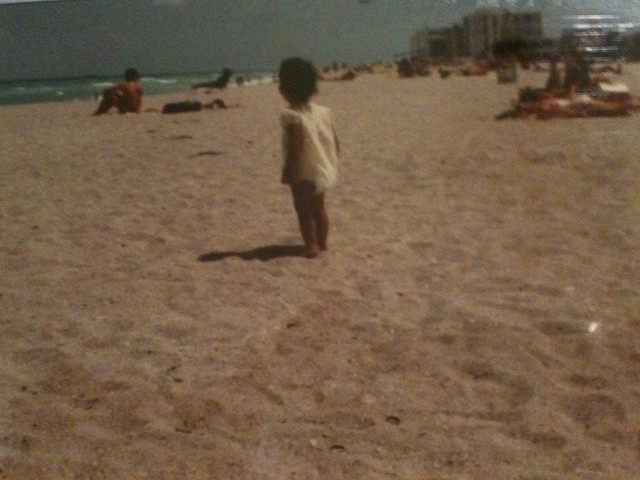They call Miami “the Magic City,” which is fitting, because it’s always able to reinvent itself.
I was born in Hialeah Hospital in 1981. History is full of eras, but this specific moment was the beginning of change, an almost traceable line of demarcation.
My mother fled Cuba in 1969 when she was 19 with her sister and my grandmother; my grandfather, a political prisoner, joined them five years later. She met my father after he arrived here in 1979, after 20 years as a political prisoner in Cuba.
I belonged to two worlds. I was an American, but at the same time, I was Cuban. I didn’t quite fit either group. In many ways, my story is the story of the city in which I was born: Hialeah is part of South Florida; yet, it feels totally different from Tallahassee, or Tampa, or Titusville, and worlds away from “the South.”
Hialeah, like South Florida, isn’t just one place, it is many simultaneously. As such, every major street carries at least three names. Red Road is Northwest 57th Avenue, West Fourth Avenue, or la cuatro.
In 1981, South Florida was just barely recovering from a riot and an influx of Cubans that arrived on the Mariel boatlift – events that shaped public discourse, policy, and dinner table conversation for years.
My parents’ first home was in a community called Lago Grande. It was so new that there was nothing nearby and it seemed like it was in the middle of a forest.
My grandparents lived in East Hialeah, back when there were no Spanish-speaking neighbors. To visit, we passed the Holsum Bread factory and the smell of bread filled the car. We passed Hialeah Racetrack, filled with photographers taking their iconic pictures of Quinceñeras in their poofy white gowns, among the pink flamingos and peacocks. There was a viandero who drove by and sold yucca and chorizo, as well as an ice cream truck whose Pink Panther ice cream bars with gumball eyes always tasted better than those at the store.
Vendors walked up and down 49th Street selling fresh churros – coated in fine granulated sugar that always managed to make a mess, making them contraband inside my father’s car – and little white paper cones of roasted peanuts.
There was a Jumbo Supermarket, where Cuban bread disappeared as soon as it was out of the oven, a Latin American restaurant – where I first saw ham hanging from the ceiling – and a new McDonald’s where I met Ronald McDonald and had my face painted.
Ocean Drive wasn’t as popular as it is today, but the beach was always full of visitors. I bounced over waves – wearing pink floaties and building sand castles on beaches – wearing Coppertone sunblock, because that’s what the little girl on the billboard used. We parked at Penrod’s, today’s Nikki Beach. And one of the major rites of passage into teenhood was taking a leap off the South Beach pier.
Everyone loved the Dolphins, Don Shula and Dan Marino. Everyone remembered their perfect season. All this started to change in the 1990s.
When I was 5, we moved, and our family now included my new little brother. I enrolled in a new school, Ben Sheppard Elementary. In third grade, the family moved to Miami Lakes. This was the edge, the newest part of town – again, right next to the “forest.” Everything south of Northwest 149th Street was filled with dense trees. As kids, we rode our bikes into “the forest” and half believed we’d find monsters, wild animals, and maybe even Tarzan. Those were the trees eventually plowed down for new homes and for Barbara Goleman Senior High.
In the 1990s, Art Deco became cool and South Beach was the place to see and be seen. The University of Miami Hurricanes became champions in football for the fourth time, we got a basketball team, and there was a struggle to protect decency: Sheriff Navarro banned a 2 Live Crew record, and Palm Beach banned female street hot dog vendors wearing thong bikinis.
Like today, there were plenty of political scandals; somehow, hundreds of dead people voted in a mayoral race. There was a flood of immigrants – thousands of Cubans braved the sea on rafts, tires, and just about anything that would float, prompting President Clinton to enact the Wet Foot / Dry Foot policy.
Hurricane Andrew arrived on what was supposed to be my first day at Miami Lakes Middle School. Other than downed trees, we were fine. But other parts of South Florida weren’t as lucky. School was delayed almost two weeks and many kids were displaced, left homeless by the storm.
Eventually there was a building boom and Miami’s skyline changed. . At that time, my mother was a vice president at Capital Bank and excited to move into a modern building in the “new” downtown, and even more so when it appeared in the movie “Bad Boys.” But after 5 p.m., downtown died. Stores and businesses closed for the night.
I attended Hialeah-Miami Lakes Senior High before the FCAT, when kids carried beepers, not cellphones. Football was big. Everyone attended the game versus Hialeah High, our biggest rival. The coveted T Trophy always resided at HML.
After graduation, I attended UM and completed a double major in journalism and English. My husband and I, high school sweethearts, married and moved to Miami Lakes. I teach at Miami Lakes Educational Center and he is a CPA with a small firm in Hialeah.
We stayed close to home. But home keeps changing. The Miami of my childhood doesn’t exist anymore, but neither does the Miami of 10 or even 5 years ago.
But some things remain unchanged. You can find anything that you need in Hialeah and all the streets there still have three names, although la doce, Ludlam Road, 67th Avenue is now also Flamingo Road, but that’s a whole other story.

